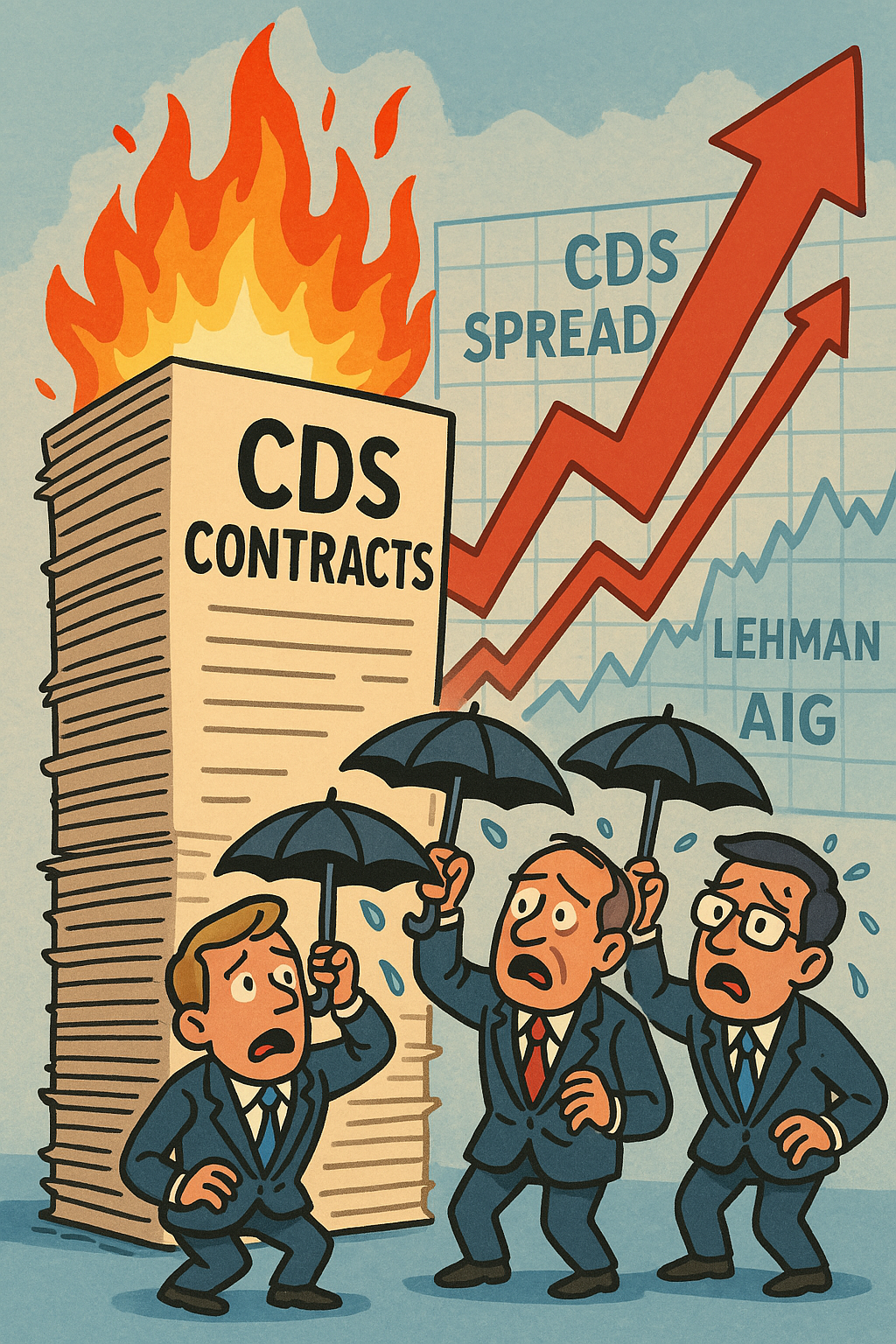
CDS Spreads: When Insurance Got Expensive
Let’s break it down:
CDS = Credit Default Swap
Basically, it’s insurance for big loans.
Imagine your friend just lent $500 to someone super sketchy. You say:
“I’ll insure your $500. If that person doesn’t pay you back, I got you—just pay me $5.”
That’s a CDS.
Wall Street used these to protect themselves in case companies or bonds failed.
But here’s the twist… everyone thought they’d never need to actually pay out.
What’s a CDS Spread?
The CDS spread is how much you have to pay for that insurance.
- If the borrower seems safe: insurance is cheap.
- If they look risky: the cost (spread) goes way up.
So when CDS spreads go up, it means:
“Uh-oh… people are starting to worry someone might actually default.”
What Happened in 2008?
Wall Street was stacking up tons of these CDS contracts—especially tied to mortgage-backed securities (MBS).
Everyone thought the housing market was safe.
Until it wasn’t.
Suddenly:
- People realized homeowners weren’t paying.
- MBS started to lose value.
- Everyone with CDS coverage panicked.
- The cost of insurance (CDS spreads) skyrocketed—even for huge firms like Lehman Brothers and AIG.
Why It Blew Up the System
Here’s why it was so dangerous:
- No one had set aside enough money to cover all these “insurance” claims.
- Companies like AIG were on the hook for billions, but didn’t have the cash.
- When Lehman failed, it triggered panic—everyone thought the insurance wouldn’t work.
- Trust collapsed. Money froze. Boom: global financial crisis.
So What’s the Lesson?
When the cost to insure against default explodes, it’s a clear sign that something’s broken.
📢 Rising CDS spreads are like smoke from a financial fire.
In 2008, they were blazing… but barely anyone outside of Wall Street noticed.
“Insurance is great—until everyone tries to cash in at once.”
That’s what happened in 2008.
And now you know how the insurance game almost crashed the world.

